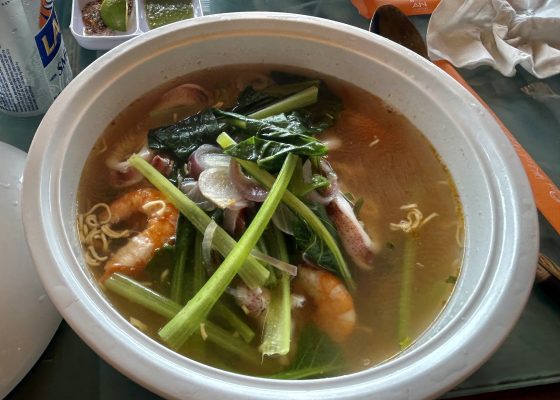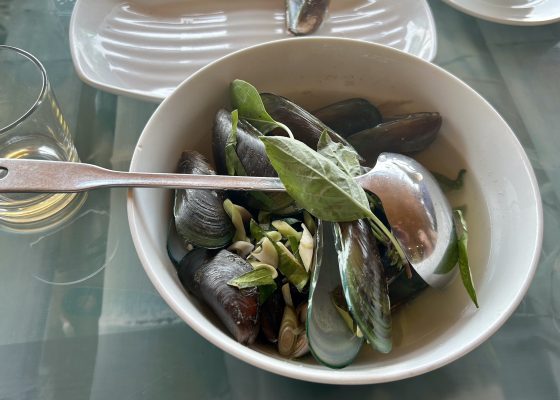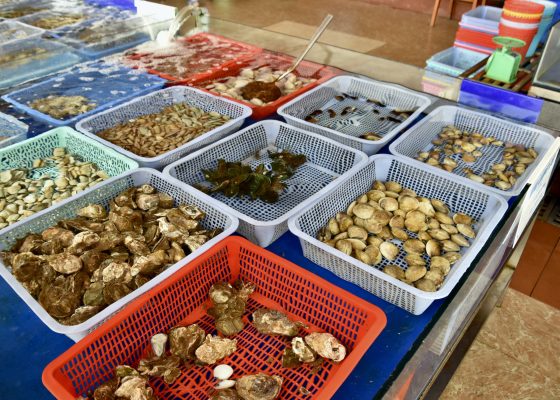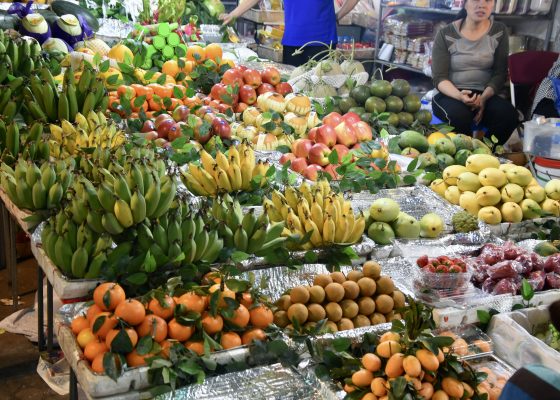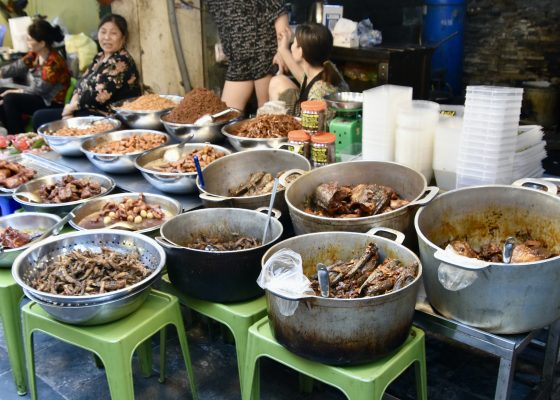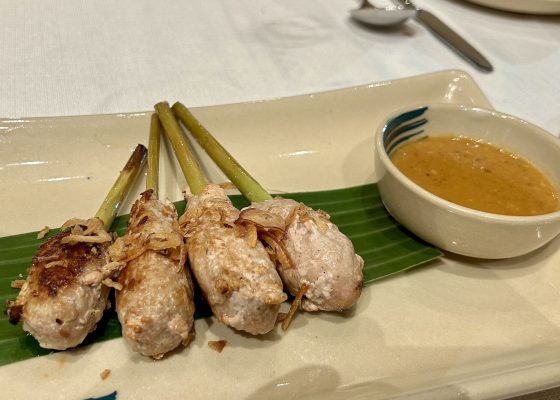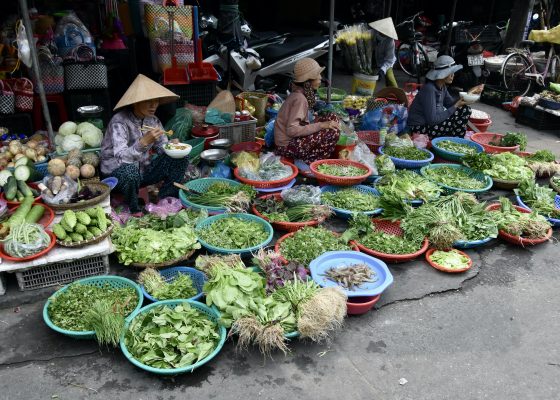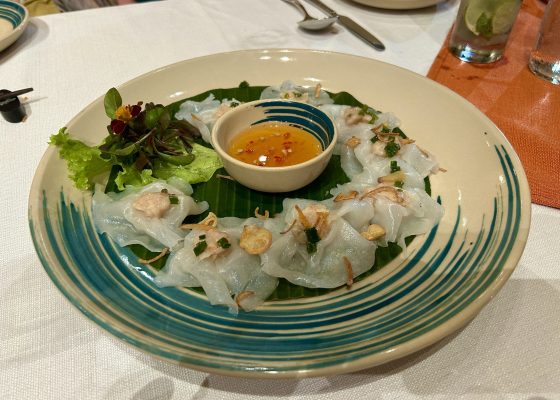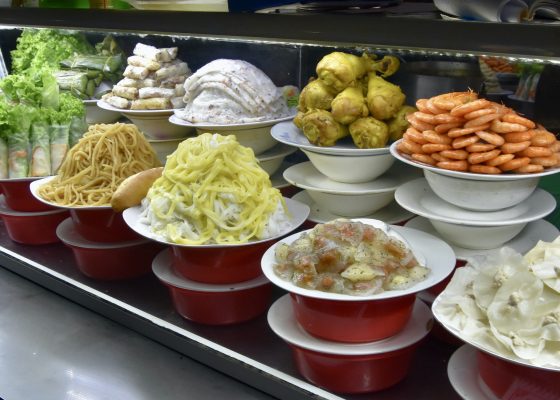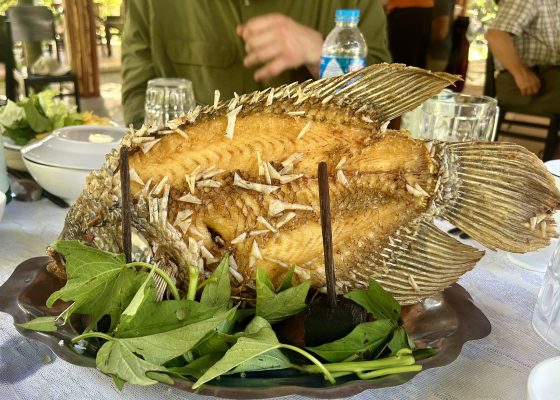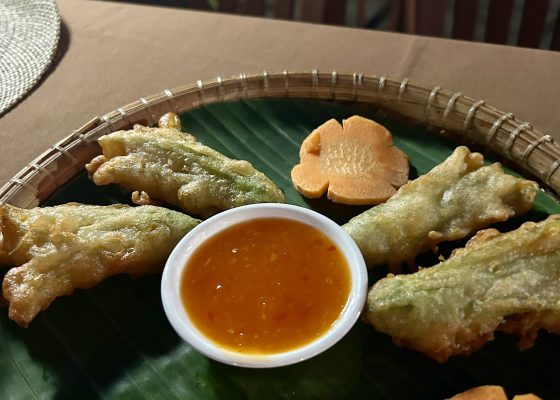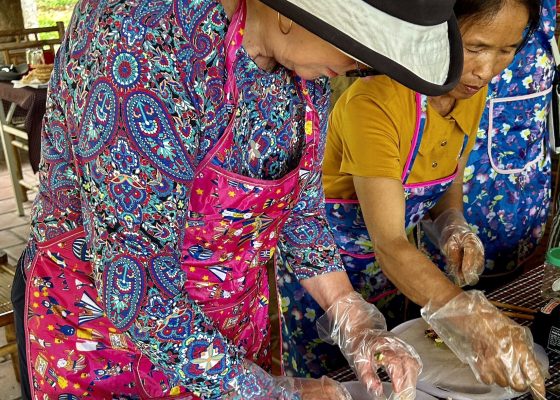Vietnam with Adventures Abroad
This is my first post of many to come from our 2023 trip to Vietnam with Adventures Abroad. Alison and I did this trip in conjunction with visits to Laos and Cambodia as well, but you can also do it as stand alone trip. We spent the first nine days of the trip in Laos after which all but one in the group departed for Hanoi where we were joined by three new travellers. As is my usual practice I will do an overview post of the entire experience focusing on the high points, but not shying away from one of the disappointing aspects. Yes there was one, but it was far overshadowed by the many, many great things we saw, did, ate and drank in Vietnam. So with this brief introduction, let’s dive right into the history of this much misunderstood nation.
History of Vietnam
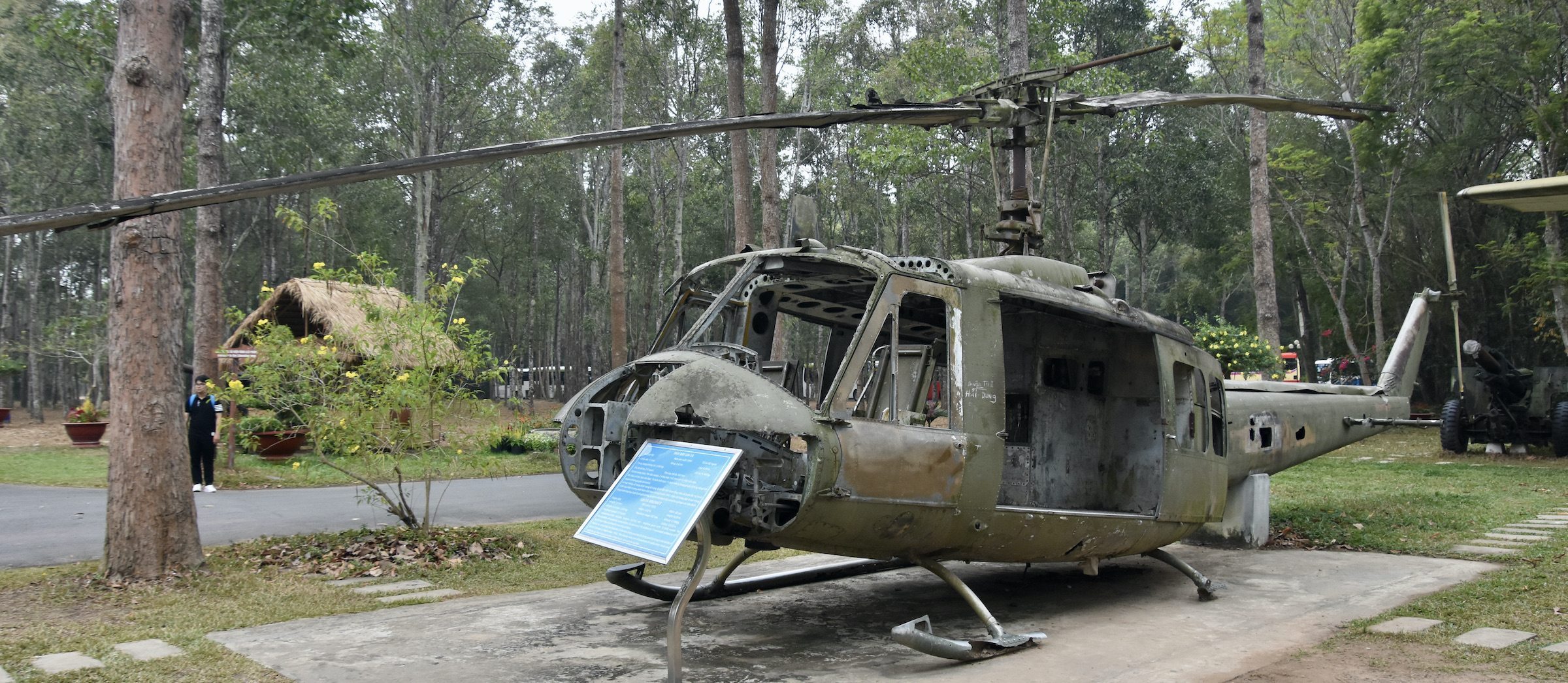
If you are over 50 chances are the first thing that comes to mind when you think of Vietnam is the war fought between the north and south from 1955 to 1975. It was the largest proxy war of the Cold War era and resulted in the deaths of over two million people, mostly civilians. As we found out in Laos it was fought not just in Vietnam, but in that country and Cambodia as well. It still has a paralytic effect on the Laotian people in places like the Plain of Jars almost fifty years later. However, if you’ve watched television programs filmed in Vietnam such as any of Tony Bourdain’s eight different shows from there you get the impression of a dynamic and diverse country that has long moved on from the horrors of that war. As usual, I suspect the truth is somewhere in between the experience of Laos and that portrayed by modern day Vietnam, but only by actually travelling to these place can you form your own opinion. That’s what I love about travel.
One of the mistakes armchair historians, myself included, often make is assuming that the present day boundaries of a country and the people who inhabit it, have always been there. Nothing could be further from reality as the migration of people’s has been a constant since the first hominids ventured out of Africa to populate the globe. As I found out in researching the history of Laos, Vietnam has been influenced by the movement of many different peoples over the last 20,000 years. It has also been invaded numerous times by China which has exerted a strong presence particularly in the north. While not invaders, the Indian subcontinent has had a strong influence through the introduction of Buddhist and Hindu practices. Lastly Cambodia, which is now a poor cousin of Vietnam population and economy wise, once occupied much of the Mekong delta area as part of the Khmer Empire. So to think of the Vietnamese as one unified people with a shared history would be completely in error. When we visit the Ethnological Museum in Hanoi we will discover that there are 54 defined groups that reside within Vietnam today.
In terms of history per se archaeologists have identified eleven different cultures that have been dominant in the area from the Paleolithic age starting in 20,000 BCE through the Mesolithic, Neolithic, Bronze Age and finally the Iron Age less than 2,000 years ago. However, these cultures have all disappeared with few visible traces so for our purposes the history of the north of Vietnam starts with the cultivation of rice in the Red River area some time around 500 BCE. The word ‘viet’ is of Chinese origin and essentially means something akin to foreigner or stranger. Nam is Chinese for south with the resulting etymology of non-Chinese people living south of China.
Vietnam occupies a long strip of land that fronts the Gulf of Tonkin and the South China Sea from the Chinese border south to the Mekong delta and then to the Cambodian border, a total distance of over 1,650 kms. (1,030 miles) as the crow flies and much longer of you counted the actual shoreline. Almost right in the centre of this long strip it narrows to only 50 kms. (30 miles) wide and this has always been a natural barrier separating the people of the north of Vietnam from those in the south.
While the economy of the north of Vietnam was largely based around agriculture, particularly rice, the economy of the coastal south was built around trade and fishing by a people who migrated to the area from modern day Indonesia. These people were known as the Cham and their Kingdom of Champa existed from about 200 until 1832, although it had been in decline for centuries before that. On this trip we will visit two of the most important places associated with the Cham culture, My Son and Hoi An, both of which are World Heritage Sites.
In the neighbouring Mekong delta the Khmers/Cambodians held sway until the mid 1700’s.
Here is a map of Southeast Asia in 1400 that brings this into better focus. Notice that the names of the places in Champa are quite different from those in Dai Viet, the former reflecting Indian influence and the latter Chinese.
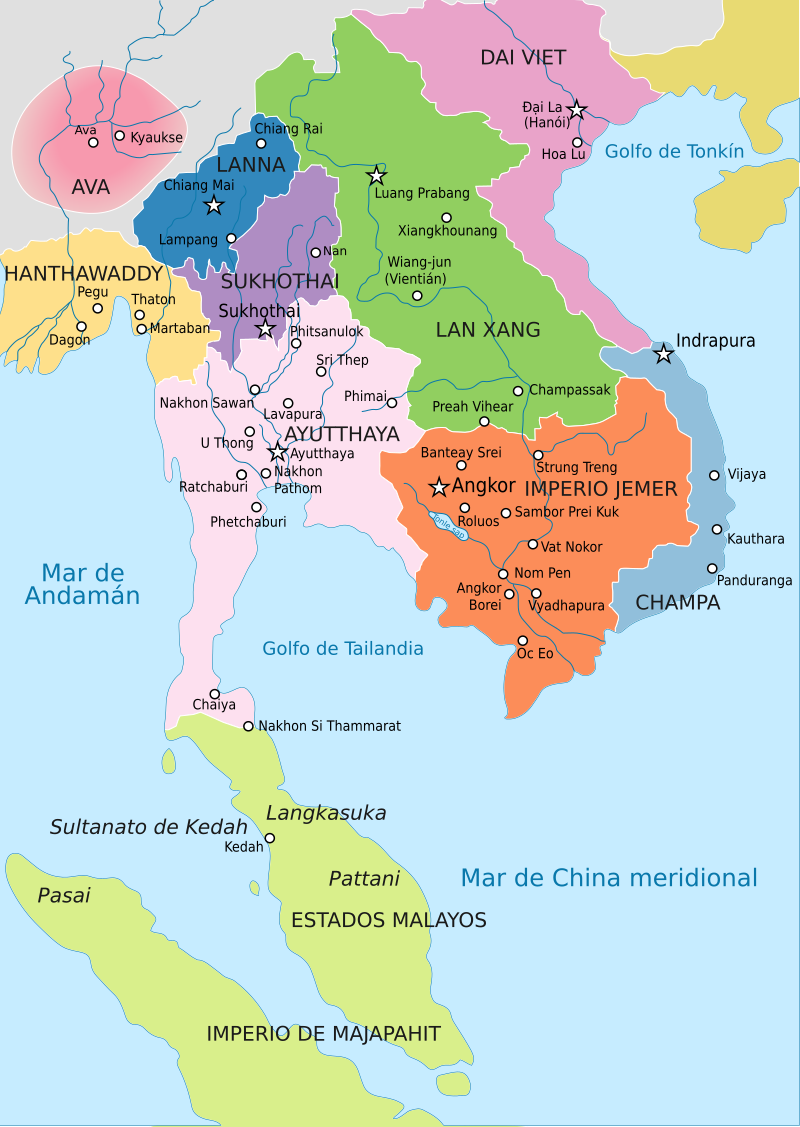
What is now north Vietnam was under direct Chinese rule for over 1,000 years from 111 BCE until 938 when after many failed rebellions it finally achieved a degree of independence that lasted until the arrival of the French in the 19th century. During that time it developed a distinct Vietnamese way of life with many elements borrowed or maintained from the Chinese.
In preparation for visiting Vietnam it is important to keep in mind that up until the French came along and conquered all of what is now Vietnam, Laos and Cambodia, there was never a unified country with the borders that Vietnam has today. The Dai Viet, Champa and Khmer kingdoms had many wars between each other long before the bloody conflict of the 20th century.
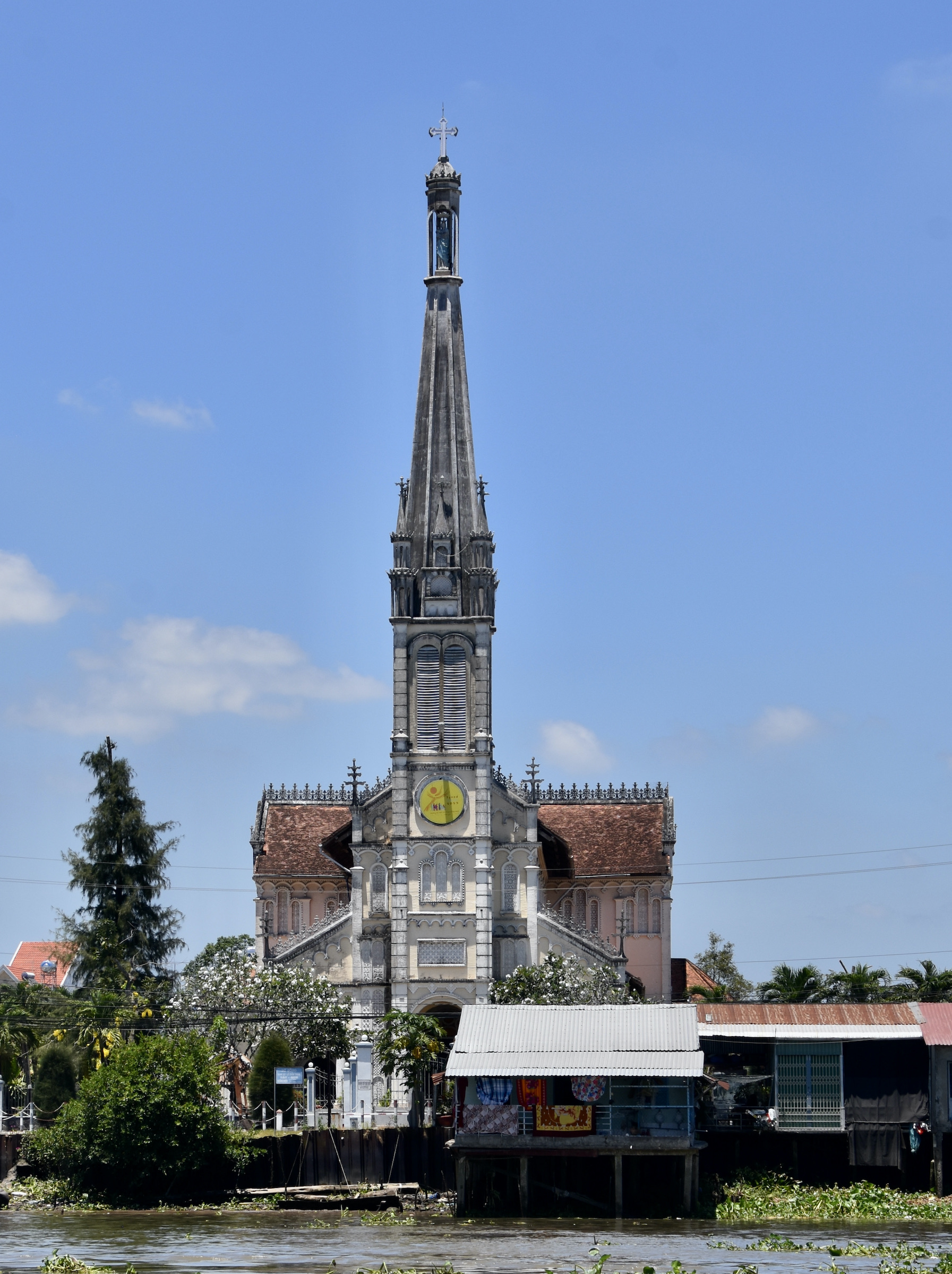
Westerners had been coming to Vietnam since Roman times and even Marco Polo dropped by on his journeys to China and back, but it was the Portuguese who were the first to establish direct ties with the area. They first arrived in 1516 and by 1540 had established a port and trading base at Hoi An. With the merchants came Christian missionaries who had converted over 10% of the population by 1700. I was quite surprised at the number of Catholic churches still to be found throughout the country. It was a Jesuit priest Alexandre de Rhodes who perfected a written alphabet from the Vietnamese language which is now used throughout the country.
While at first the Europeans were content to advise and arm various warring factions, they eventually wanted more control and long story short, after a number of campaigns they created French Indochina in 1887. That for the first time united the north, the south and the Mekong delta into one political entity. The French actually weren’t around that long, just over 70 years, but they had a profound effect on the look of Vietnam. There are grand colonial buildings like the Saigon Opera House to be found in all the major cities.
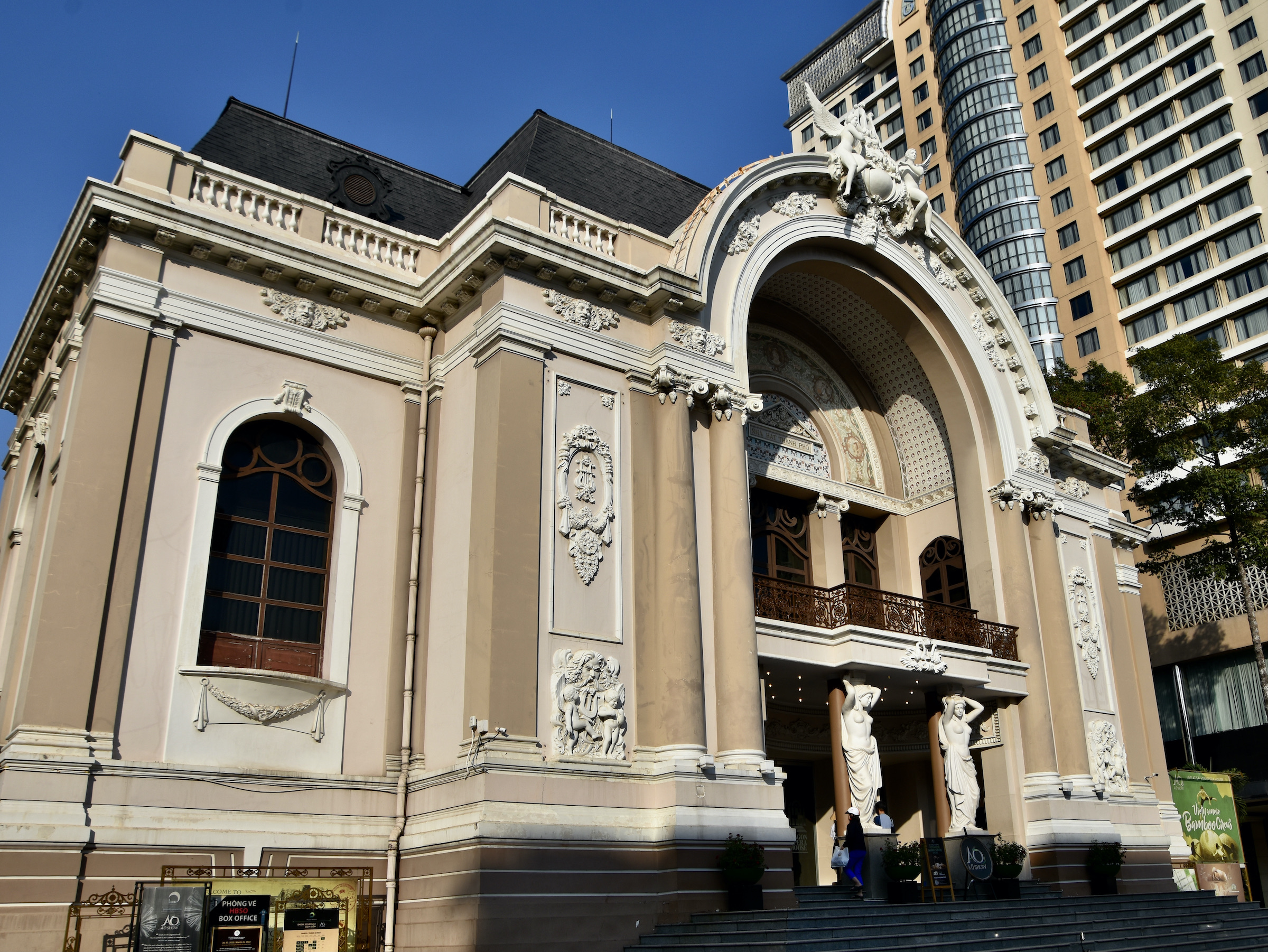
It was WWII that hastened the demise of French rule with the Japanese invading in 1940, but allowing the Vichy government to remain place almost until the end of the war. During this time resistance forces, with assistance from the Allies, built up a small army led by the man who would become Ho Chi Minh. After the war ended he declared Vietnam independent and triggered a war with the French that ended with their defeat at the famous battle of Dien Bien Phu. The independence of Vietnam was recognized in an agreement to which France, China, Great Britain and the Soviet Union were signatories. The catch was that there would be two countries, the communist north and the supposedly democratic south, divided along the 17th parallel. The map of Vietnam in 1954 bears a striking resemblance to the historic division between the Dai Viet and Champa kingdoms.
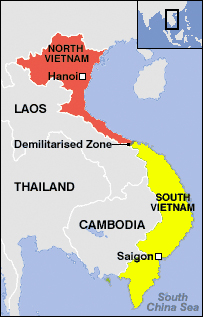
Part of the deal was that elections were to be held in 1956 to decide on a unified government, but these were never held and that led to the start of the Vietnam War, the last of many in that war torn country. As we know, the communists won and after a period of deep freeze, relationships with the rest of the world were normalized when Bill Clinton visited Hanoi in 2000. While the communists were great at fighting, they were lousy at running a peace time economy. After attempts to put in place doctrinaire communist economic policies created nothing but failure, the laissez-faire approach much favoured in the south was allowed to return and today Vietnam has a vibrant and fast growing economy. Contrasting modern day Saigon where entrepreneurship is the rule with Havana where communist policies still dictate is an eye opening experience as to which system leads to better economic results and higher standards of living.
So with that history behind us, let me regale the reader with some of the highlights from the Adventures Abroad tour of Vietnam.
Highlights of the Tour
- The Children of Hanoi – One of the places that every tour company will include in Hanoi is a visit to the Mausoleum of Ho Chi Minh and Adventures Abroad is no exception. While I’ll write more about that visit in a future post, what I will never forget is the reception we received from the thousands of school children who were also lined up to see their fabled leader. Without exception they smiled, laughed and asked to get their pictures taken with us. Considering the propaganda Communist regimes regularly put out about ‘the bourgeois capitalists’, I thought they might see us as potential enemies, but the opposite was the case. Here is our guide Claude Morency posing with one class.
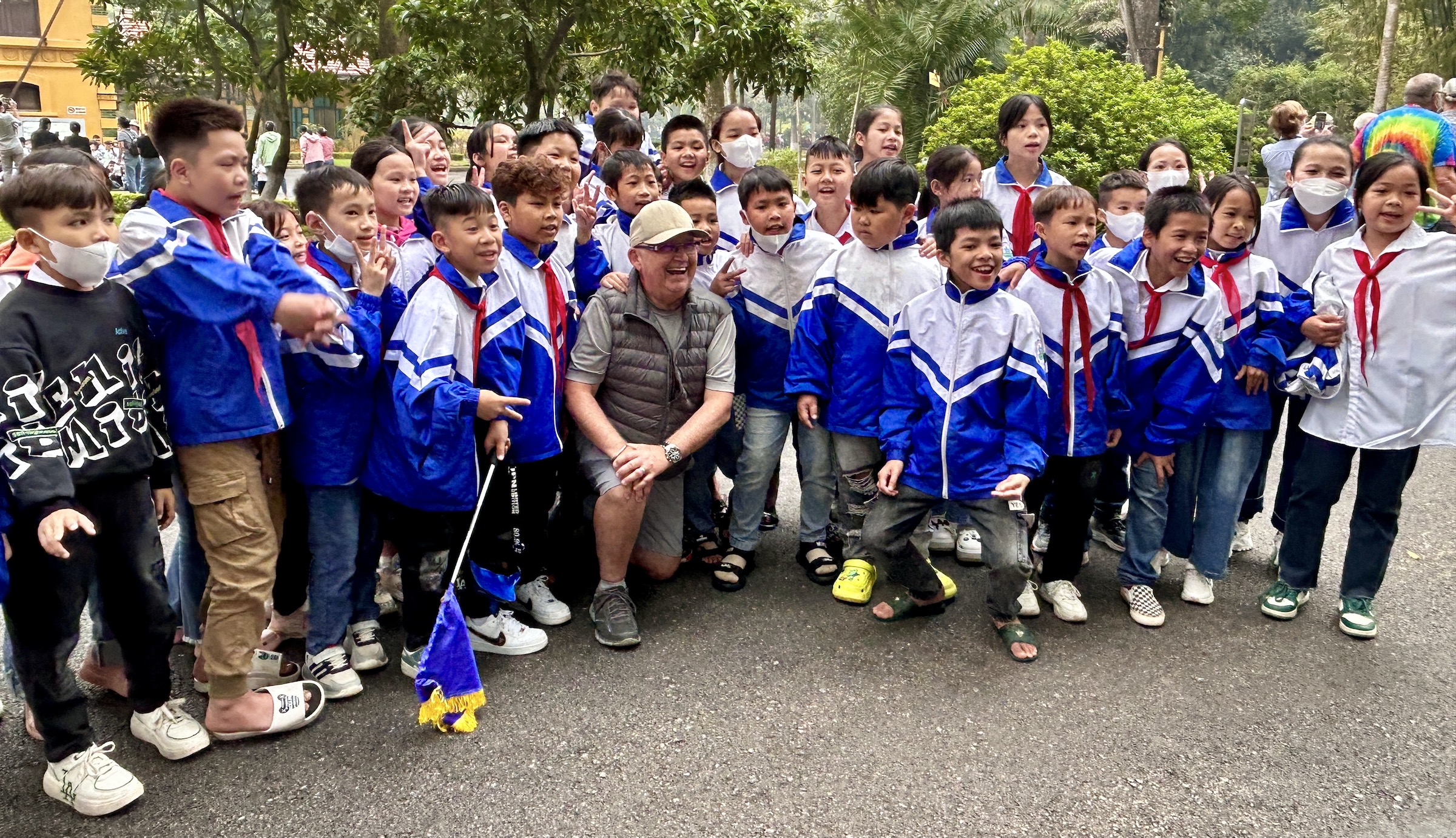
2. The Vietnam Museum of Ethnology.
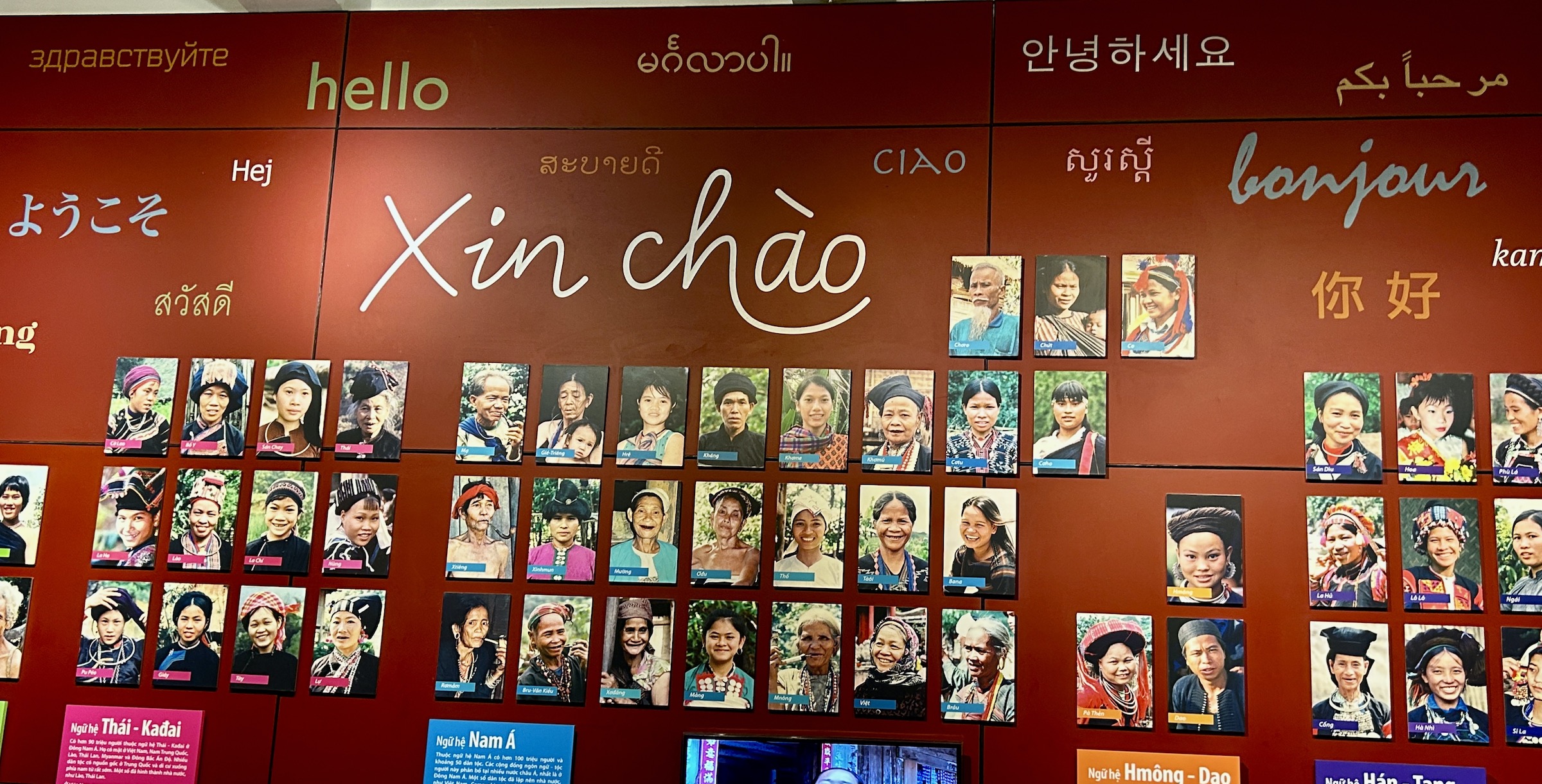
At this modern museum in Hanoi we learned about the tremendous diversity of people that make up the population of Vietnam.
3. Visiting the Rice Farm
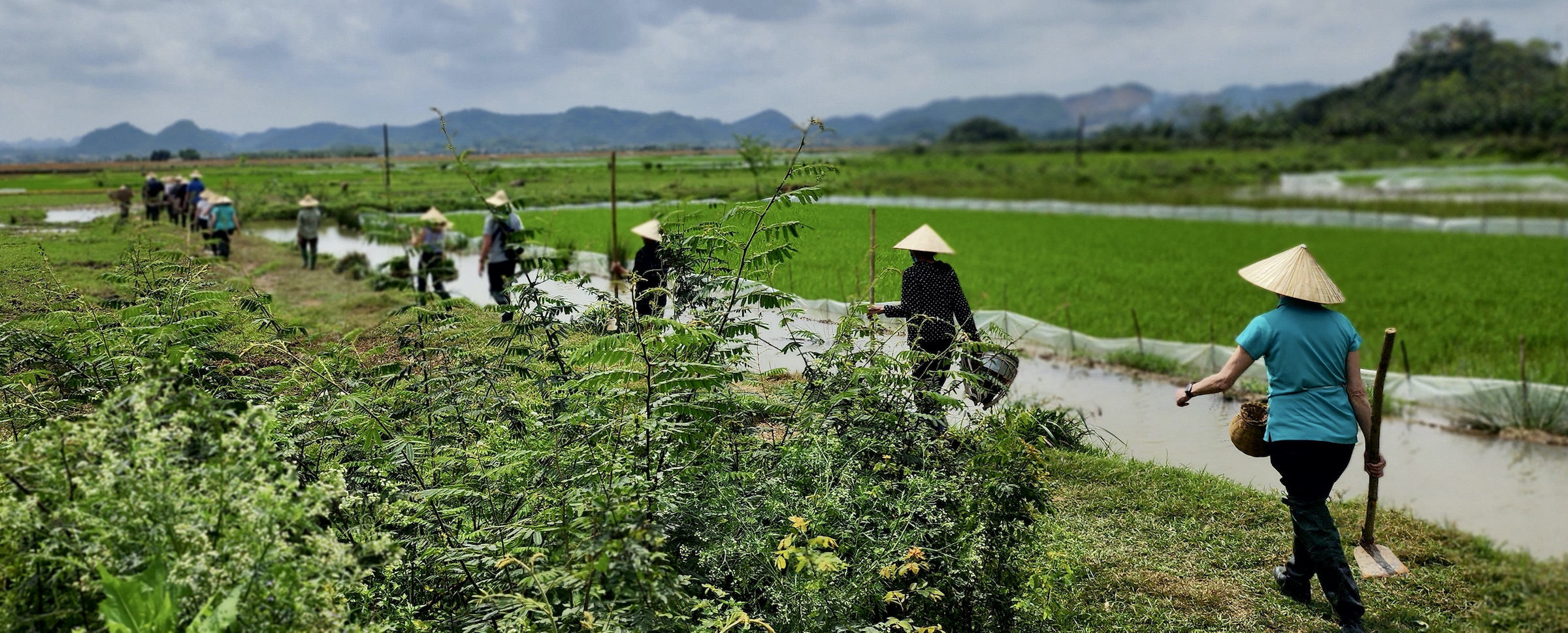
I understand that the visit to the rice farm was a relatively new addition to the Adventures Abroad Vietnam itinerary. If so, whoever came up with the idea should be given a medal. This visit which included learning how to plant rice and then the cooking class that followed was one of the best AA experiences Alison and I have ever had and will be something to look forward to on any future tour. I can’t wait to write this up in detail in a future post.
4. Hoi An
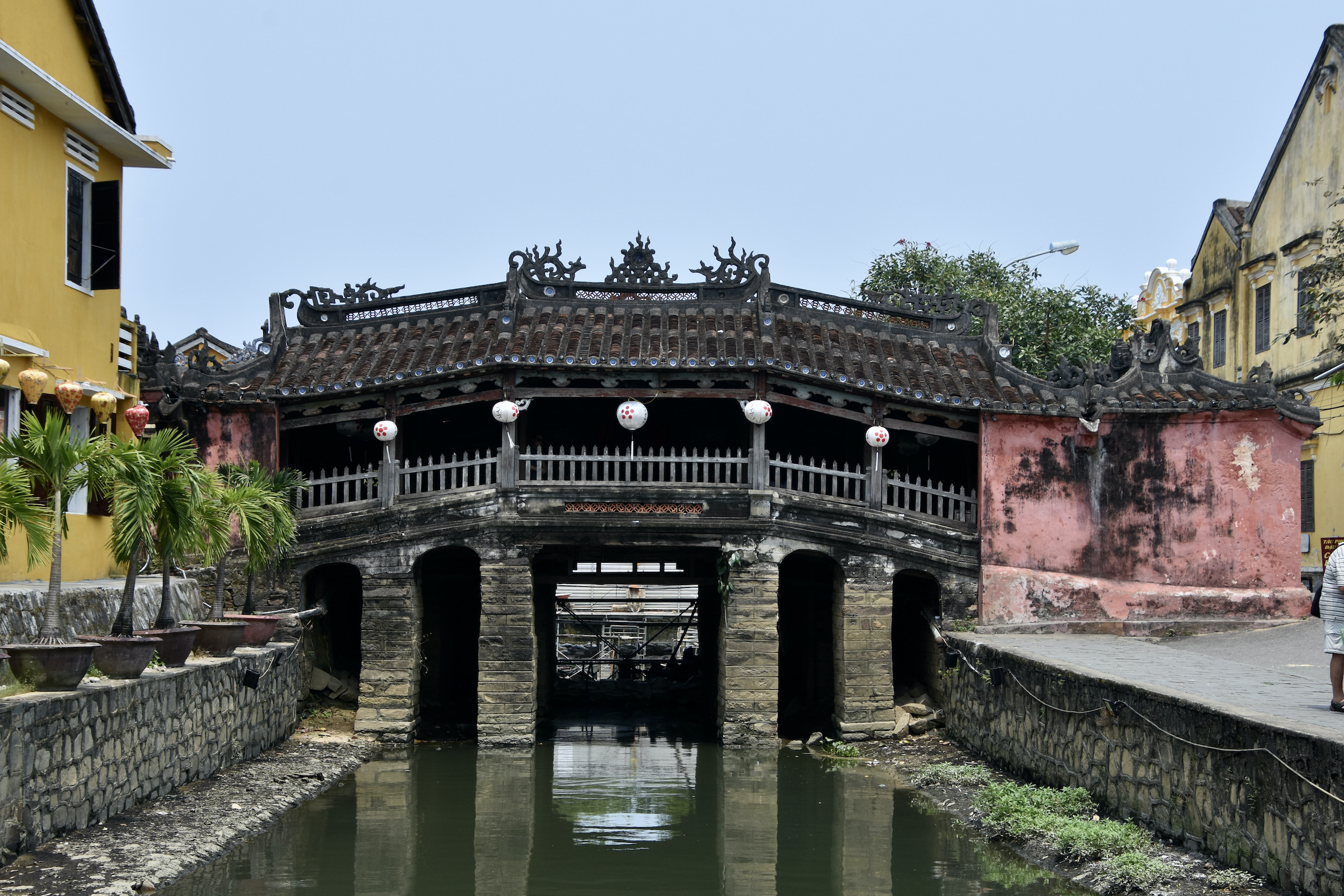
I knew nothing about this World Heritage Site before we arrived, but loved every minute of our visit to this ancient trading port.
5. My Son
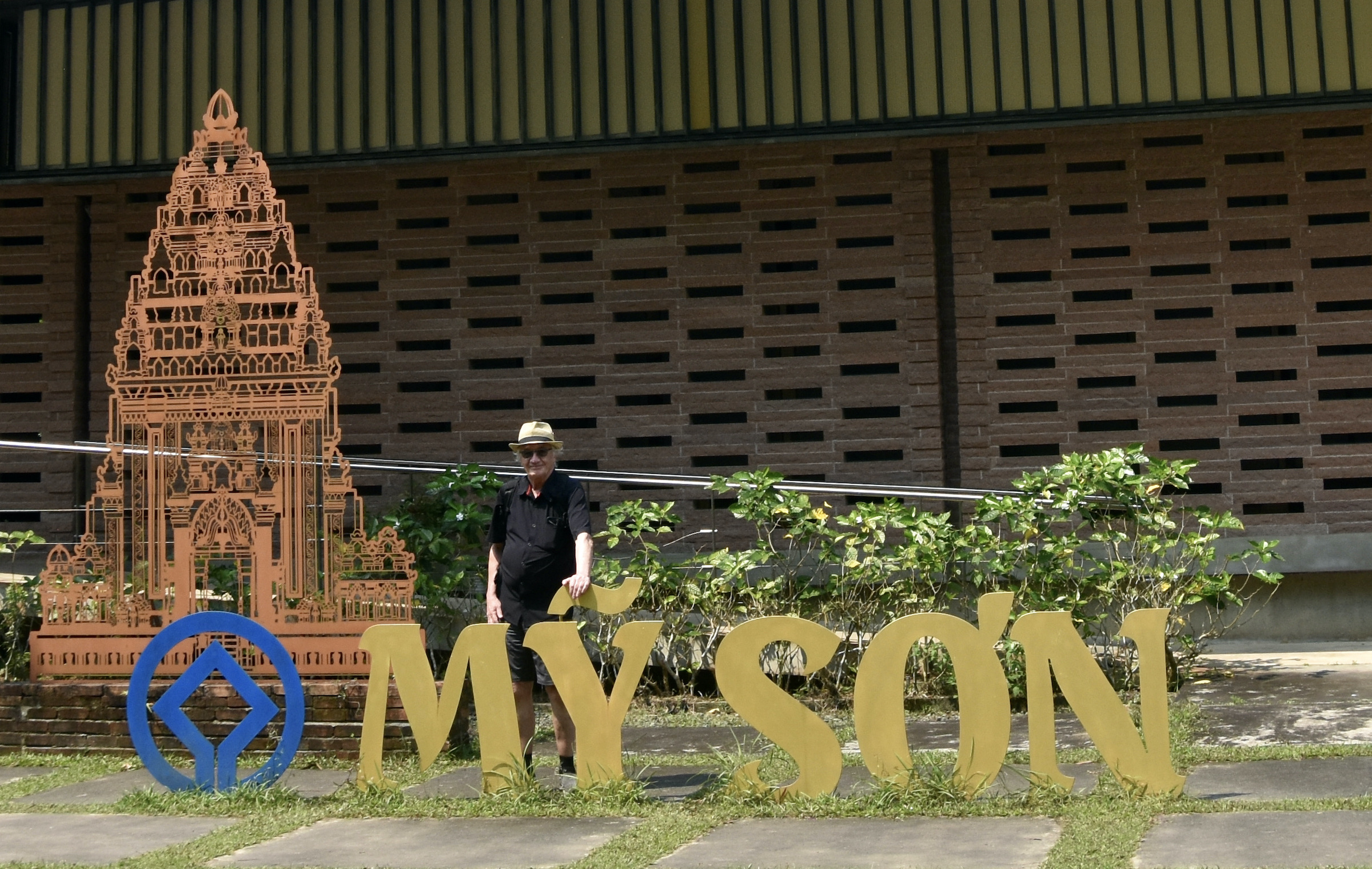
Another UNESCO World Heritage Site that should have been on my radar, but wasn’t. The last thing I was expecting to find in Vietnam was a huge Hindu temple complex that was second in size and importance only to the Angkor Wat complex we would see in Cambodia.
6. The Cham Museum, Da Nang
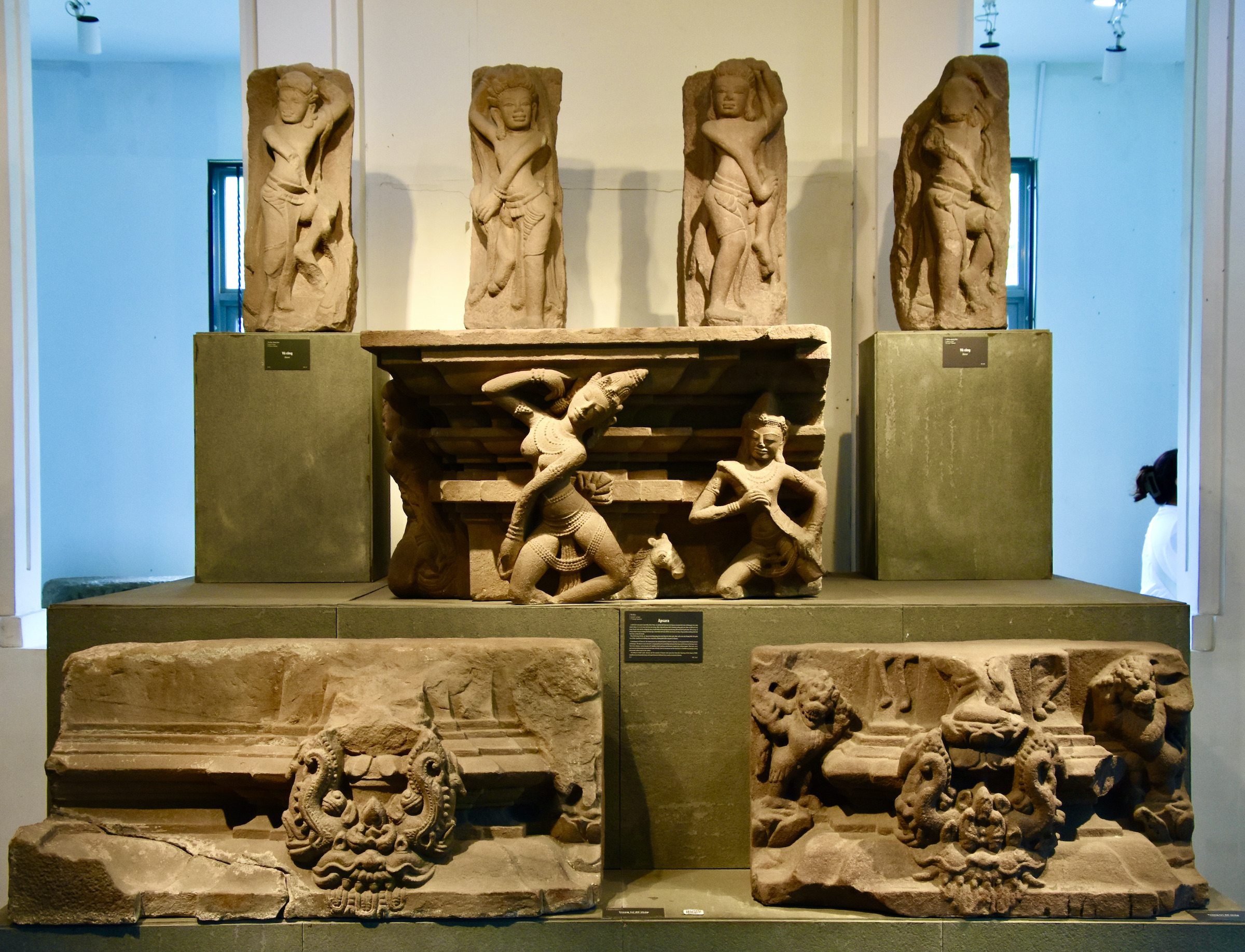
Continuing the Hindu theme was the excellent small Cham Museum at Da Nang.
7. Marble Mountain
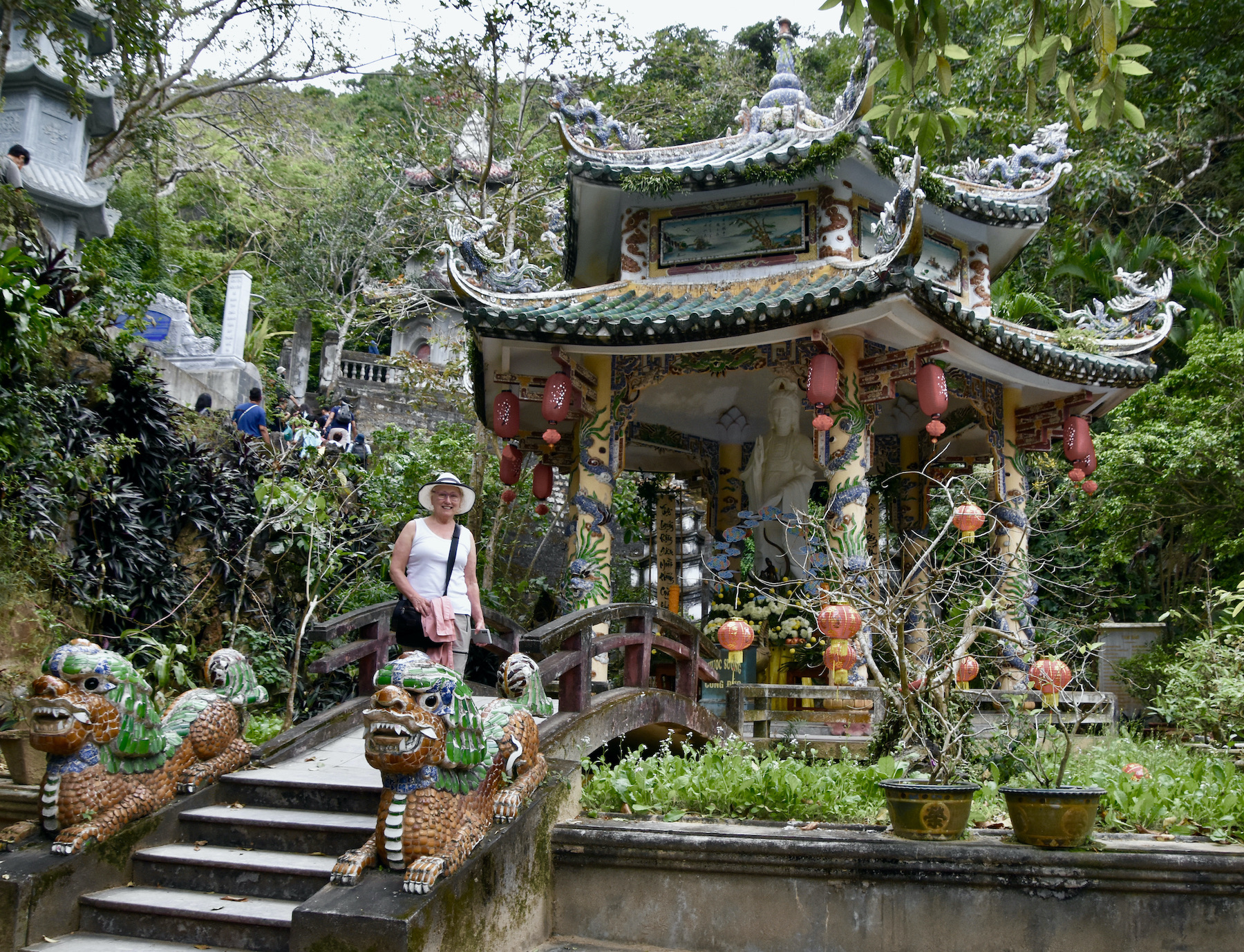
A delightful stop with a chance to walk up to the top of the small mountain to visit the many pagodas or take the elevator. This place provided an amazing contrast to the Hindu temples of My Son.
8. Hue
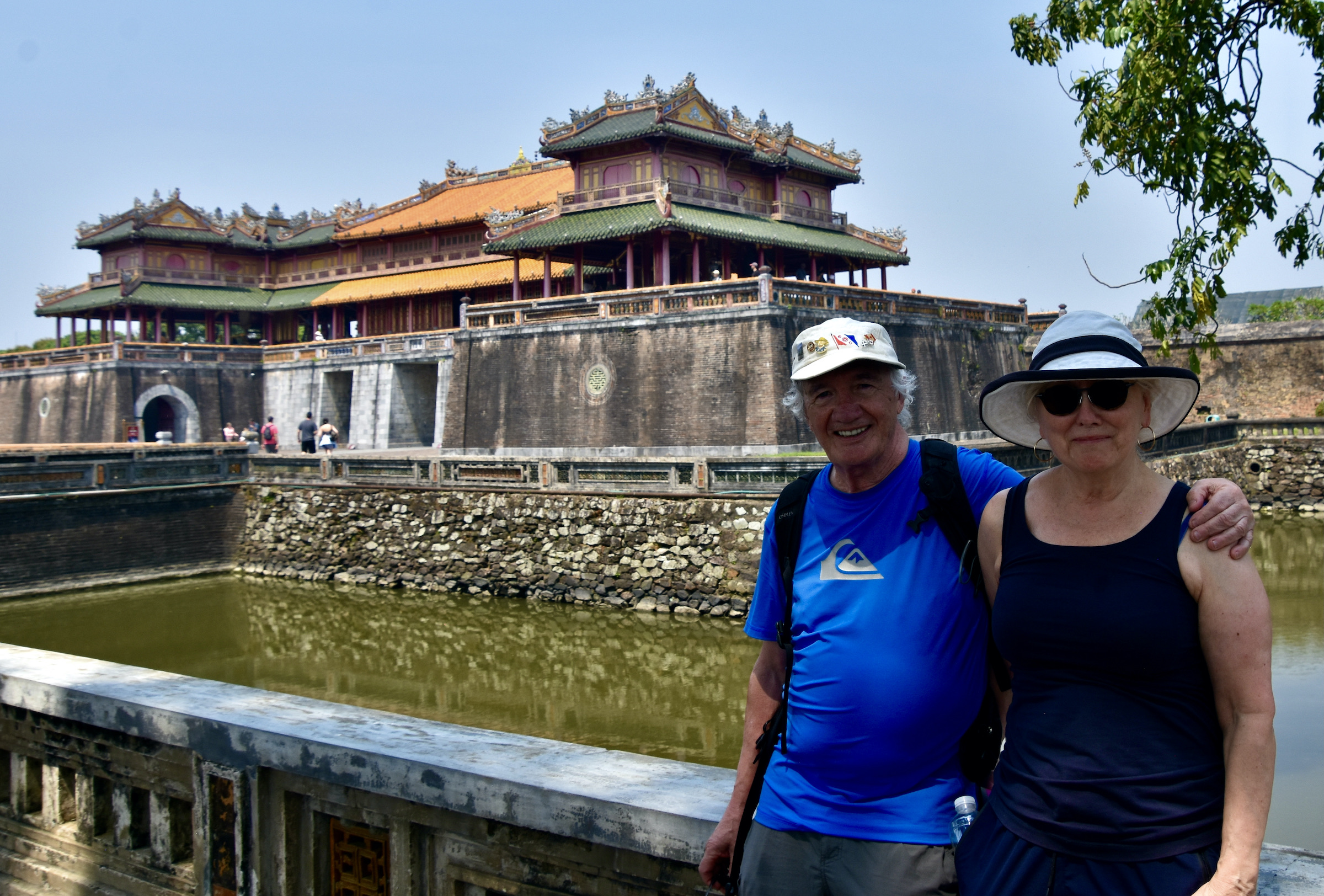
An amazing city with a ton of things to see and do, most notably visiting Vietnam’s version of the Forbidden City which Alison found superior to the better known one in Beijing.
9. Saigon
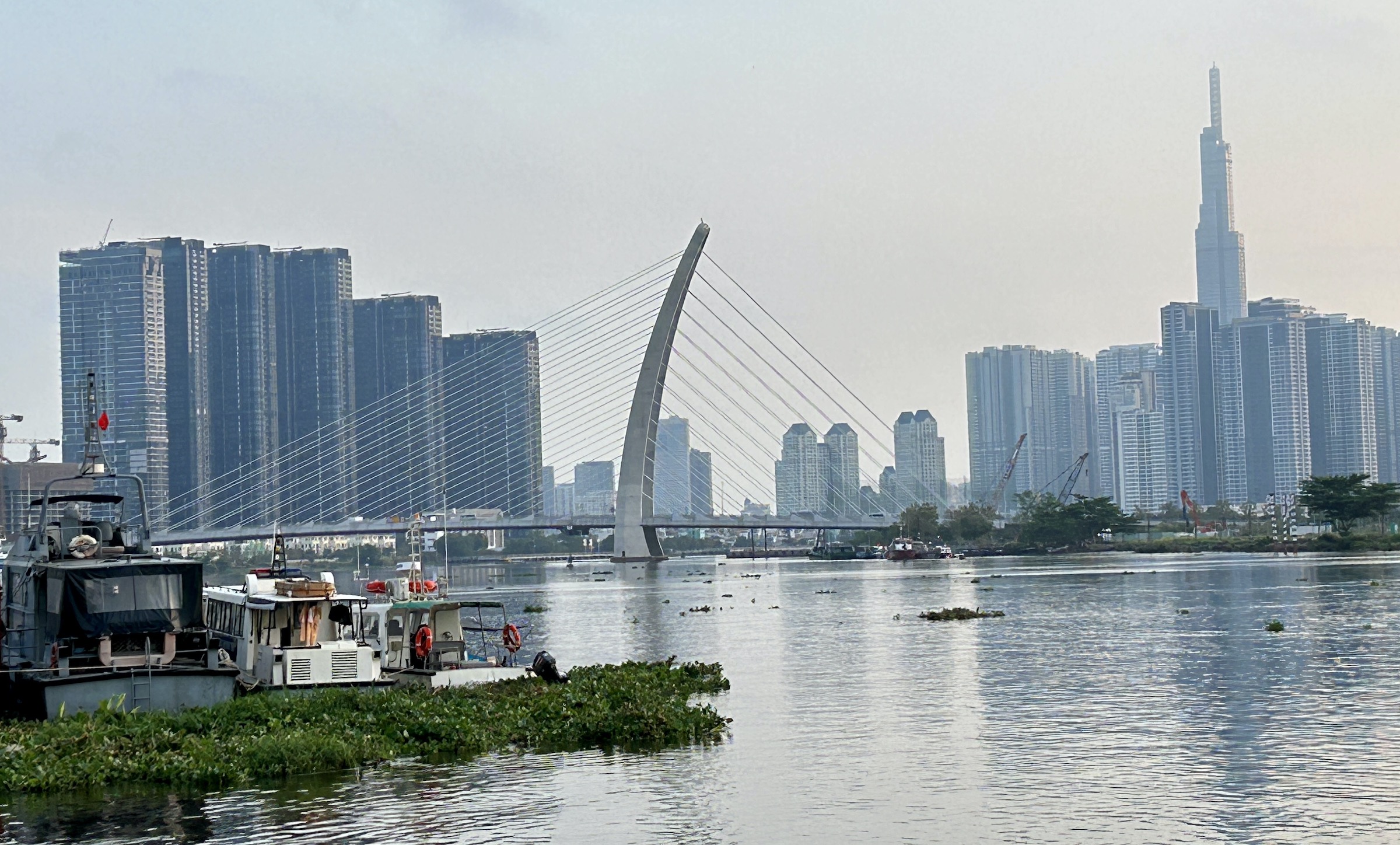
Nobody who lives there calls it Ho Chi Minh City and for good reason. No place could be further from the communist ideal than this vibrant, youthful and optimistic city. An absolute must to visit at least once in a lifetime.
10. The Mekong Delta
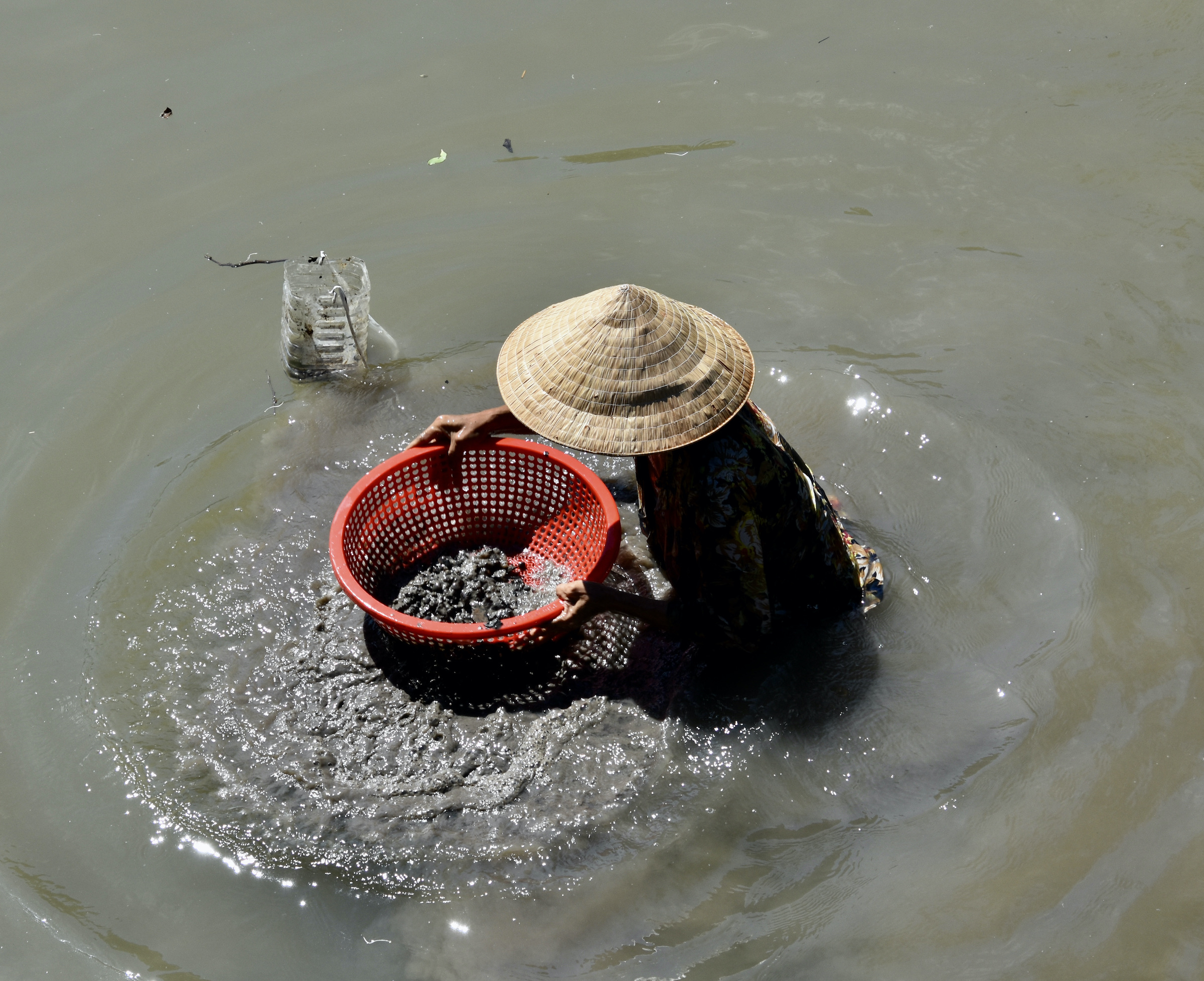
A completely different landscape and way of life from central and north Vietnam, I wished we had had more time to spend here and so will you. The waterfront on the delta city of Can Tho is a delight.
11. The Vietnam War Reminders
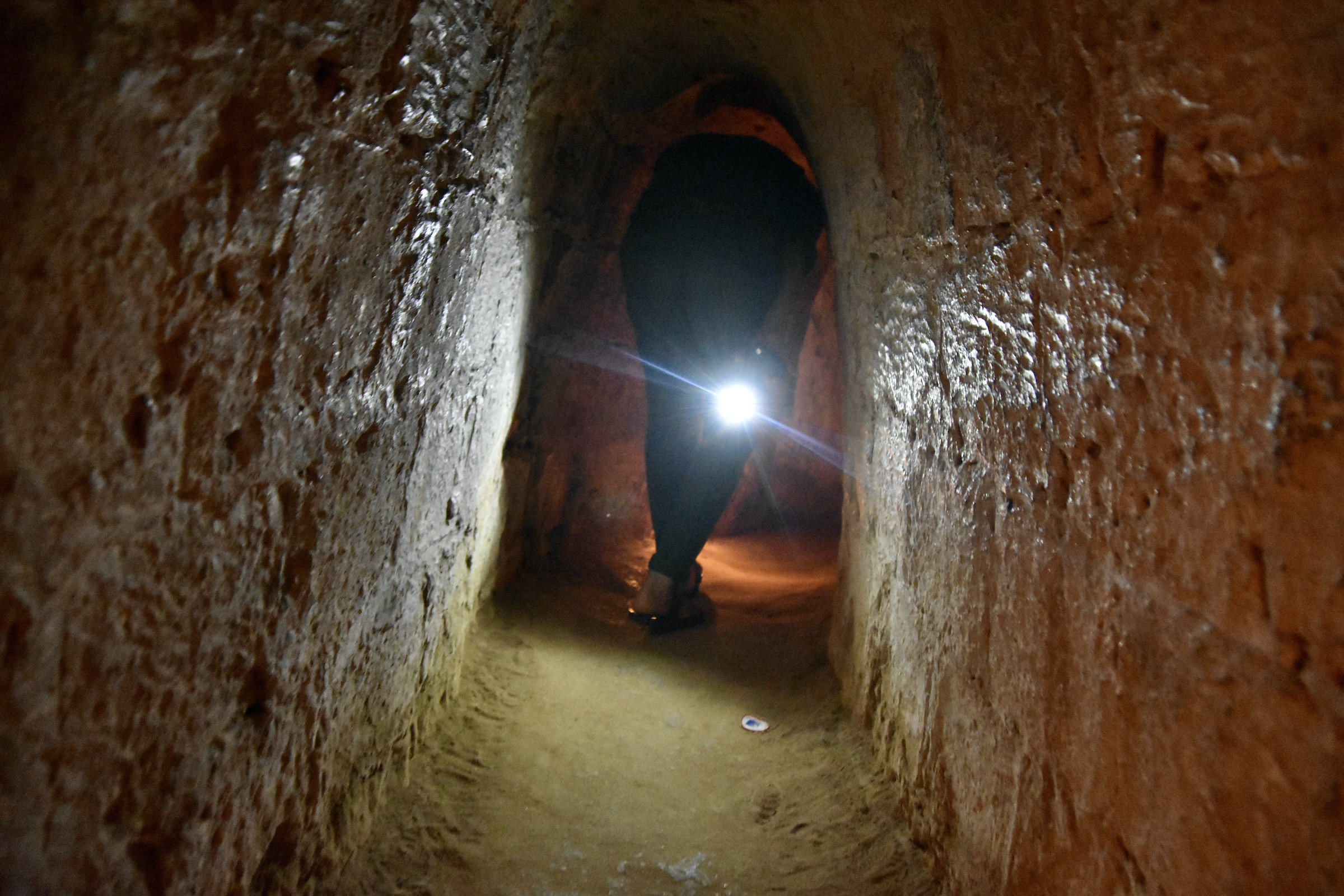
We visited sites associated with the Vietnam war in Hanoi (the Hanoi Hilton where John McCain was a prisoner), Saigon (War Remnants Museum) and Cu Chi (the infamous tunnels where one of my fictitious heroes Harry Bosch was a ‘tunnel rat’ during the war). I can’t say any of them gave me a warm and fuzzy feeling and certainly the north Vietnamese want to make damn sure that you know who won the war, but these were important places to see – even more so I suspect for Americans, especially any who fought in Vietnam.
12. The Van Long Boat Ride
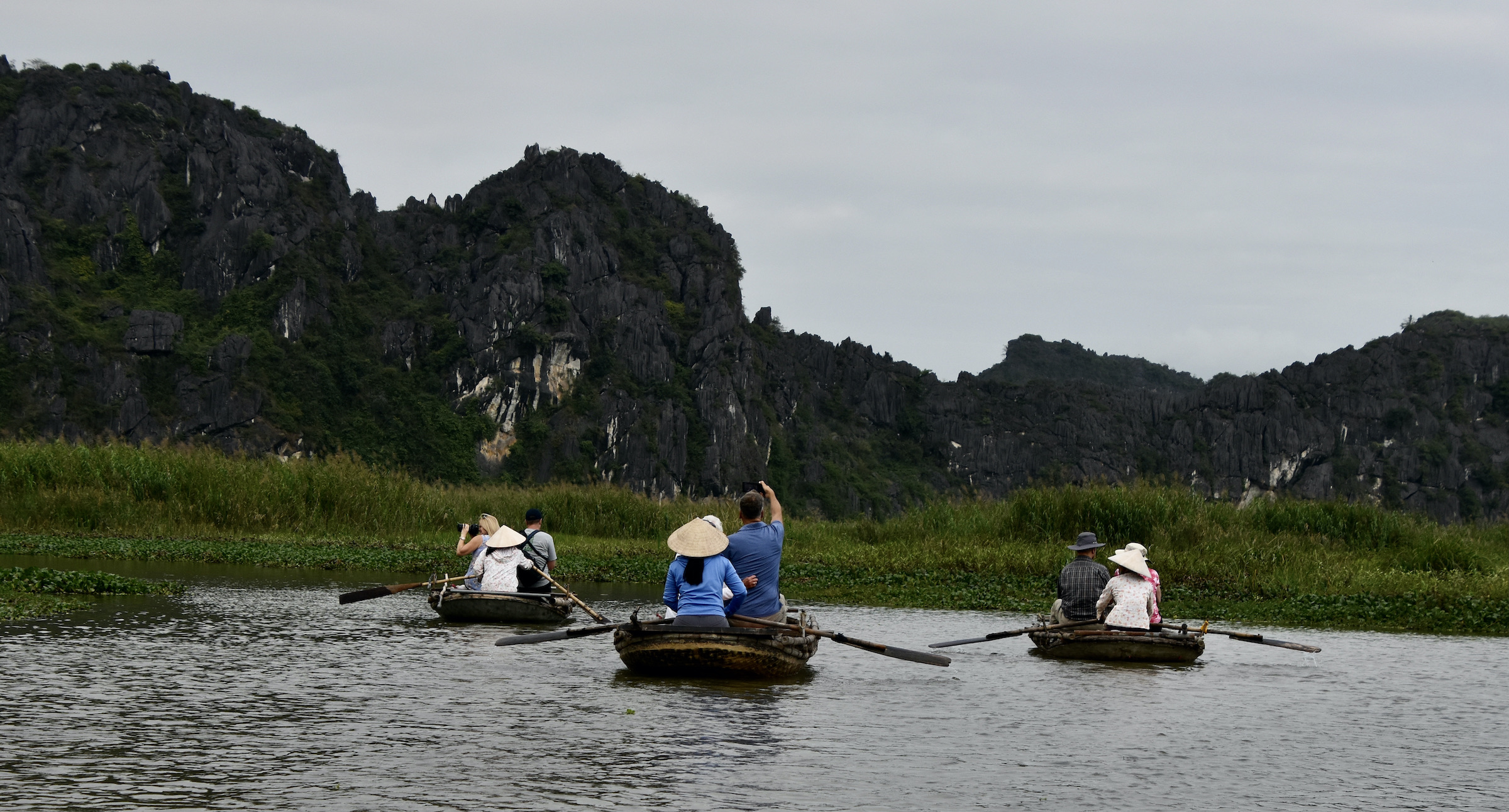
I believe this was an impromptu decision by Claude to rent these small boats for us and have a very pleasant ride through the north Vietnamese countryside. It was an example of why I like travelling with Adventures Abroad. Their very experienced guides are not hide bound to an itinerary that can’t be changed or added to and that can often provide some of the most serendipitous moments of the trip.
13. The Food
As noted, Tony Bourdain loved coming to Vietnam mostly because of the food and so did I. Nothing more to add other than it’s safe and no one on the tour had any bad reactions or afflictions. The gallery below speaks for itself. Double click on an image and then double click again to open in full screen.
- Seafood Noodle Soup
- Mussels
- Clams, Clams, Clams
- Fruit for Sale, Hanoi
- Street Food
- Chicken on Lemongrass Skewers
- Green Vegetables
- White Rose Dumplings, Hoi An
- Prepared Food at the Hoi An Market
- Elephant Ear Fish, Mekong Delta
- Fried Pumpkin Flowers
- Alison Wrapping Spring Rolls
14. Claude Morency and the Local Guides
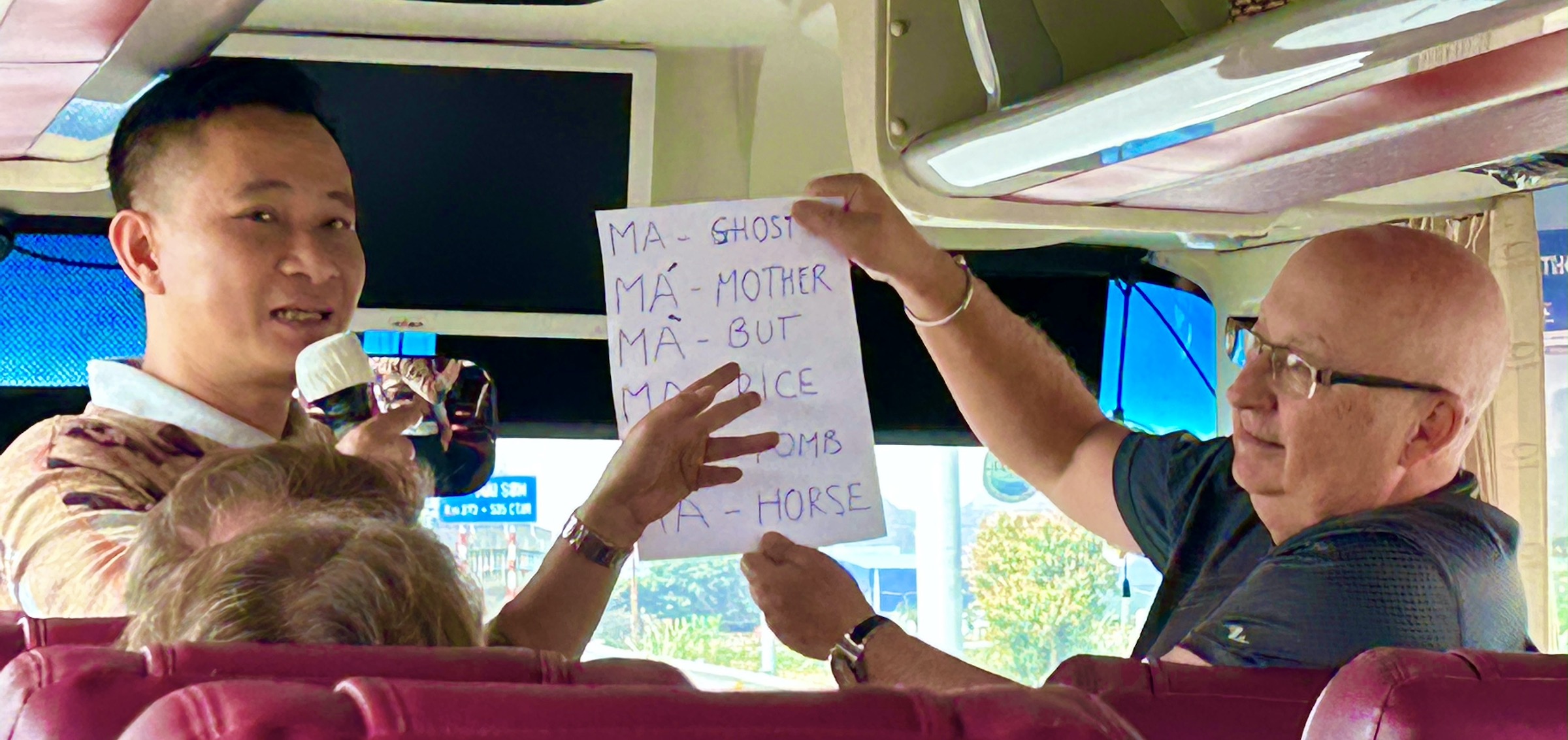
Claude Morency, who has been leading AA tours for well over two decades, was our guide on the Vietnam tour and we had three local guides as well; one in the north, one in the central area and one in the south. Between them they gave us a much better understanding of the history, culture and cuisine of the different parts of the country.
Okay there you have fourteen good reasons to visit Vietnam. Now I’m going to be honest about one part of the trip that was not what I expected and I doubt that there’s very much any tour company could do about making it a more pleasant experience. I’m talking about Ha Long Bay. According to Touropia, a respected compiler of top 10 and 25 lists, this is the #1 tourist site in the entire country. It makes every top ten list I’ve checked out on the net so there is no way a tour operator could leave it off the itinerary.
I first encountered Ha Long Bay in the James Bond movies The Man with the Golden Gun and Tomorrow Never Dies or at least I thought I did. Although portrayed as Ha Long Bay in the films, the scenes were actually shot in Thailand. Nevertheless I had this picture of these pristine islands of karst limestone in an edenic location. That would probably be the case if the bay was not so polluted and overrun by so many tour boats that it reminded of Venice or Dubrovnik. Just approaching the embarkation spot was depressing as we passed miles of deserted half completed buildings and dozens of tied up cruise ships. Covid had wiped out the Chinese tourism market and nowhere was it more apparent than here. I simply could not imagine what the place would be like with that market back at full strength.
I’m not going to dwell on it further, but don’t let your expectations get out of hand. One shitty experience out of dozens of great ones is no big deal in the larger scheme of things.
In the next post I’ll delve deeper into those great experiences as we begin our tour of Vietnam in Hanoi.


